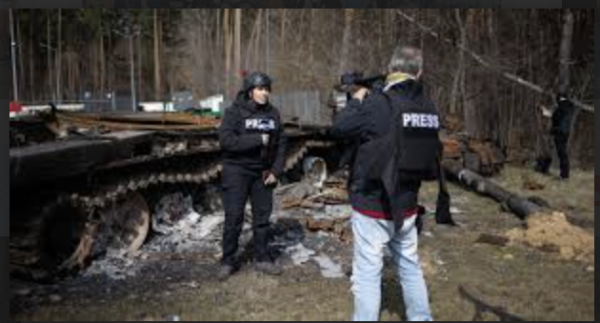Point/Counterpoint: mask mandates in schools
Luke Gilfillan, Managing Editor:
During the 2017 to 2018 flu season, the Center for Disease Control and Prevention (CDC) estimated almost 600 Americans under 18 died of the flu. This number was higher than previous years but by no means an anomaly. Yet, in past years, nobody suggested schools require children to wear masks.
Using a rational risk assessment, it was decided risks associated with the flu did not justify requiring masks. Masks deprive people of fresh air, the ability to see faces or to see others smile, things essential to the human experience, and worth taking a small risk to keep.
Unfortunately, recent paranoia surrounding COVID-19’s impact on youth has cost many Americans their ability to make rational risk assessments concerning the virus.
The number of people under 18 (22% of the population) dying from COVID-19 is minimal compared to other causes of death. Out of 5 million reported COVID infections, 400 people under 18 in the United States have died over the past eighteen months. To further put that into perspective, deer (yes, the majestic grass-eating ones) kill about 400 Americans every two years.
Most mask supporters will admit the risk to young people from COVID is extremely low, and would not on its face justify masking every young person in the state six hours daily. If it did, why was there never a proposal to mask youth during flu season?
They insist, however, that youth should be forced to wear masks so they do not infect people who the coronavirus poses a serious threat to.
There are two glaring problems with this argument.
The CDC has determined the Pfizer COVID vaccine is 95% effective at reducing transmission of COVID; the vaccine is also 90% effective at preventing severe illness; the Moderna vaccine is about the same and the Johnson and Johnson vaccine is about 60% effective.
In short, getting the vaccine reduces your risk of catching the coronavirus, and dying from it, to virtually zero. If Grandma gets the vaccine, you do not need the mask. If Grandma does not get the vaccine, she takes that risk for herself, and everyone else shouldn’t have to bear her burden.
Masks and other mitigation measures have been tried repeatedly to stop COVID infection over the past year but have failed. The only thing accomplished has been to delay the inevitable, which is either vaccination, or catching coronavirus.
The delta variant of coronavirus, the predominant U.S. variants, is almost twice as transmissible as the original variant. The delta variant’s infectiousness makes it virtually impossible to control or stop. Masks may prevent infections in the short term, but the unvaccinated are still likely to be infected with COVID-19 later on.
A point can be made that masks should be worn for those with weakened immune systems, or those who cannot get the vaccine for medical reasons. The CDC says the latter category is made up almost exclusively of those with mild allergic reactions to the vaccine, around 2% of the population. Most people with autoimmune diseases can get the vaccines, but their weakened immune systems less effectively fight infection.
For this small group, various options are available if they are uncomfortable with risks posed to them by COVID, most notably KN95 masks and N95 masks, said to be up to 95% effective at filtering outside particles.
In issuing his second mask mandate, Gov. J.B. Pritzker alluded to the fact that ICUs in some parts of the state are reaching their current capacity. This is certainly an issue in many parts of the state, and the Governor should work to ensure hospitals are expanding capacity to meet demands. However, the overwhelming number of certain hospitals in the state has nothing to do with masks, but everything to do with vaccination.
The CDC says unvaccinated people currently outnumber vaccinated people hospitalized with COVID-19 30 to one. Those who choose not to get vaccinated and find themselves hospitalized are reaping the consequences of their health decisions. While everyone should be treated to the best of the hospital’s capacity, unvaccinated people should take a backseat to other hospital patients, should a hospital become overwhelmed.
The governor’s mask policies should acknowledge the reality: we are in a “swim at your own risk” situation. If you are vaccinated or under age 18, your risk from COVID is extraordinarily low, and you should be allowed to make your own risk assessments. If you are unvaccinated or belong to a vulnerable population, get the vaccine, take other protective measures, or take the risk of catching COVID.
One hundred percent of people are going to die, and probably not from the coronavirus. We have to decide whether we live another year or more of our short lives smiling and breathing fresh air, or hiding our faces and treating each other as if we are vessels for disease. I know my choice.
Abby Ryan, Staffer:
OPRF needs to continue mandating masks if we want to have a chance at staying in-person this school year. Even if there is a compelling argument to not mandate masks, there is a much larger risk of the school shutting down if we don’t wear them.
COVID-19 is not gone. Cook County has a daily average of 1,109 new cases, the New York Times says.
And OPRF isn’t social distancing. It’s impossible with our large school population. If we’re not social distancing, we should at least be wearing masks. It’s a mild discomfort, making it a bit harder to hear and maybe a bit hotter in the gyms, but wearing them is worth it to stop COVID-19.
The Center for Disease Control and Prevention (CDC) reports masks can reduce the risk of infection by about 75%. Masks “will effectively block the respiratory cloud” of COVID-19 droplets, the National Center for Biotechnology Information (NCBI) reports, saying that “the transmission range of the leaked particles is largely reduced.”
There is a point to be made about the fact that around 400 people under 18 have died from COVID-19, and that to us, it’s essentially a bad flu. That might not sound like a large number- it’s only around 11% of the student body. However, it’s also around 17 classes worth of students.
Also, death is not the only outcome of COVID-19. Only .03% of childhood COVID cases result in death, so that leaves 99.97% of cases to suffer long-term effects. Some common long-term effects of COVID-19 in children are “decreased exercise tolerance, joint pain, fatigue, and brain fog,” Hackensack Meridian Health reports. The NCBI also includes gastrointestinal problems, nausea, dizziness, seizures, and hallucinations in their list of long-term COVID-19 symptoms.
Masks also prevent us from spreading the virus to other people outside of school, like grandparents or infant siblings. There’s also the new Delta variant, which is twice as contagious as the original COVID-19. Vaccinated people can still catch and spread the Delta variant.
Also, only 80% of students and 89% of employees are vaccinated. That’s 20% of students that are unvaccinated and 11% of adults. If we are not masking for ourselves or for other adults, we should be masking for them. There’s also a number of people in the school who can’t get vaccinated because of existing health conditions, and they still have to come to school. If all of the vaccinated students aren’t masked, they could pose a large risk to the unvaccinated population.
Everybody at OPRF wants to stay in school for the rest of the year, and masks are the way to do that. OPRF is not social distancing, masks prevent COVID-19, and they are basic human decency when it comes to preventing transmission. Wearing masks lets us stay in school, with our friends, and with the access to the educational support we need to succeed. Keeping the mask mandate ensures that OPRF can stay in person safely, and as long as possible.






Patrick Missey • Nov 22, 2021 at 2:09 pm
Well written, very readable. I wanted to applaud Luke for his newest article, he’s got courage to write about something some people won’t like. I hope you haven’t been dissuaded from sharing your honest opinion, because that’s what good journalism needs